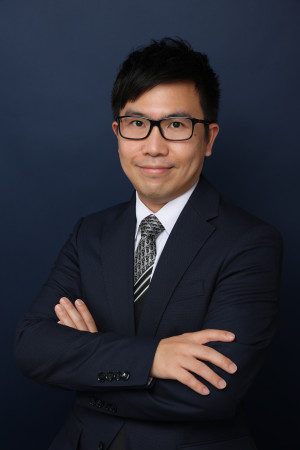Learning by "Seeing"
Describing scenery and situations is a common topic in Chinese writing at schools. However, how can students describe places more concretely without having visited them before? This is where technology plays an important role, and Dr Gary Wong’s project is a brilliant example to illustrate how technology can facilitate students’ learning.
Dr Gary Wong, Assistant Professor in the Faculty’s Academic Unit of Human Communication, Development, and Information Sciences, is the Principal Investigator of the project called “Enhancing language education with artificial reality neo-platform” (eLEARN platform 1.0), which received HK$3.4 million funding from the Quality Education Fund. Since 2017, Dr Wong and his team has collaborated with teachers from 18 primary schools to design 15 units of Chinese lessons for primary 4 to 6 students. Each unit comes with virtual reality (VR) teaching materials and lesson plans to build a VR eLEARN platform.
One of the project’s major motivations is to support students through experiential learning. Students are often limited by classroom-based learning, which has limited contextual experiences that enable students to explore or to imagine. Even though teachers can organise field trips in order to provide their students with authentic experiences, such experiences can be costly both in terms of time and expense, not to mention the extremely important issue of the safety management of young students in primary schools. For obvious reasons, it is also impossible to take them to explore certain places, such as tourist attractions far away from Hong Kong, or situations taking place in the past.
Using a P6 curriculum as an example, students can learn about the landscape of Huangshan (“Yellow Mountain”) using VR technology. Although they cannot physically climb up the steep mountain range in southern Anhui Province, they can “see” a 360-degree view of the mountain and its “four wonders” - peculiarly-shaped rocks, pine trees, the sea of clouds and hot springs - with the aid of mobile phones and VR glasses. Then, they will learn to imagine and describe the landscape with the guidance of teachers, or learn to use similes or metaphors to describe what they have “seen”. This approach to learning is what Dr Wong calls “virtual experiential learning”.
Another example is to use an epic science movie “Interstellar” as the theme to simulate the environment inside a space ship, which is unlikely to be accessible or even imaginable by ordinary people. This helps students boost their imagination and gain a better understanding of the movie plot and characters.
“The technology aspect of VR technology has always been emphasised. However, we have not really thought much about how to apply such technology in daily life. We work with primary school teachers to brainstorm which topics are best portrayed by VR technology. Although there are existing VR teaching materials available on the market, the strength of our project is that frontline teachers are involved in the design process,” Dr Wong explained. “Of course, VR cannot replace the traditional learning process. Students need to roll up their sleeves and do experiments whenever they can. We suggest spending only three to five minutes on learning with VR during class.”
Although the development progress was hindered by the pandemic, the project has already received positive feedback from schools. Riding on this, the project team hopes to improve the existing infrastructure, and expand the project to cover the English and General Studies subjects. They have already recruited teachers from 17 schools to join the design process. Dr Wong hopes that teachers can use Immersive Learning Technologies (VR and augmented reality) to complement their teaching as part of the school curriculum, and that it will become as common as PowerPoint slides for teachers to use and produce easily in the future.

Dr Gary Wong and his team build the VR eLEARN platform for providing students “virtual experiential learning” experience.

Students using VR googles to explore the undersea world in Okinawa, Japan.



